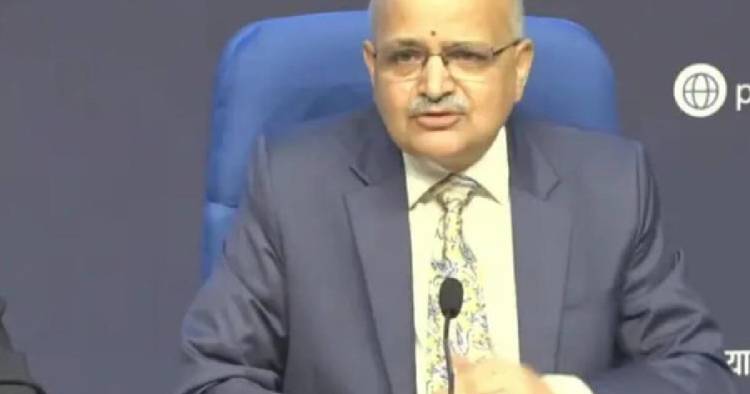New Delhi: India surpassed Japan this year to settle in fourth place among the world’s wealthiest economies, according to a statement from NITI Aayog CEO Subrahmanyam. After the 10th meeting of the Governing Council of NITI Aayog, Subrahmanyam addressed the media and pointed out, using data from the International Monetary Fund (IMF), that India now holds fourth place in the world economy, after only the United States, China, and Germany.
We have become a $4 trillion economy, bigger than Japan’s, according to figures from the IMF, he said. The reason for India’s rise, according to him, was strong internal policy choices, good global conditions and an increase in perceptions about the nation’s manufacturing industry abroad. NITI Aayog CEO said that he sees India on track to become the third-largest economy in the world, surpassing Germany, within the next two to three years. “At our current rate, India will become the third-largest economy in just 2.5 to 3 years,” Modi said.
Quick economic growth in India is due to actions like the Make in India initiative and efforts to improve infrastructure and financial discipline. According to Subrahmanyam, the large youth population and good trade deals with the UK, UAE and Australia are helping India achieve ongoing growth. At the NITI Aayog meeting called by Prime Minister Narendra Modi, people discussed ‘Viksit Rajya for Viksit Bharat 2047’, paying particular attention to sustainable cities, skill education and making it easy for investors to support the nation’s growth.
Validating US President Donald Trump’s comment on prioritising manufacturing within the United States, Subrahmanyam assured that manufacturing in India is also simple, emphasising the country’s lower costs. He stressed that the government wants to bring in more global capital by creating an “investment-friendly charter” and improve water resource management by building river grids for each state.
The IMF forecasts that in fiscal 2026, India’s nominal GDP will be about $4.187 trillion and slightly better than Japan’s, which is estimated at $4.186 trillion. Economic policies, strength and using global supply chain changes are what economists believe guide India’s rise in Asia. Helping a lot is India’s success in bringing extreme poverty below 5%, which has made the country a significant part of the global economy.
While India celebrates its economic performance, Subrahmanyam emphasised that the country needs to keep reforming and work together across states to achieve its vision of being developed by 2047. India has reached a key growth phase, and he praised states for matching national goals in their planning.



Comments are closed.